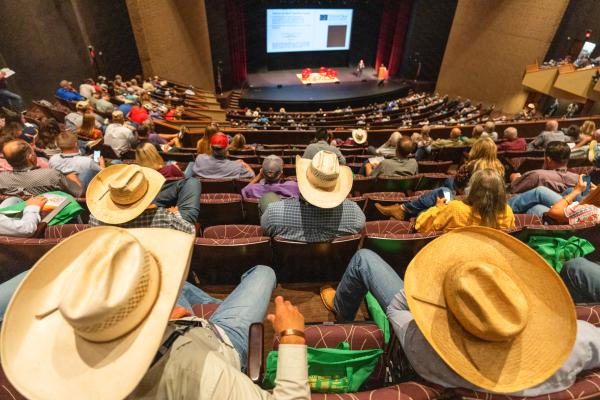Consumer demand, high prices prompt cattle producer optimism
Optimism greeted beef cattle producers from around the country attending the Texas A&M Beef Cattle Short Course recently for two primary reasons — high cattle prices and continued consumer demand, despite the higher beef prices.
Unlike in previous decades, Americans today eat higher-grade beef and pay a premium for it. Beef cattle producers broke out their timelines at the Texas A&M Beef Cattle Short Course to see where their industry had been, where it is today and where it might be headed.
David Anderson, Ph.D., Texas A&M AgriLife Extension Service livestock market specialist and professor in the Texas A&M College of Agriculture and Life Sciences Department of Agricultural Economics, set the mood for the first day of the Short Course with his analysis of today’s market and a forecast.
“We have a lot of reasons for optimism in the cattle market going forward,” Anderson said.
Three market issues will determine where the beef industry moves in the longer term — demand, drought and speed of rebuilding, Anderson said.
The combination of high consumer demand with the current tight beef supplies added up to Anderson’s prediction that high beef prices will continue.
Moving forward, Anderson said drought and feed costs will determine the speed of rebuilding the herd, affecting how soon the prices come back down. Record corn production this year combined with fewer cattle on feed could affect feed costs. The question is: Are the current beef prices high enough to start herd rebuilding?
The answer to that question seems to be no. Right now, there is little evidence of the herd rebuilding, he said. Beef heifers held back as cow replacements are the lowest in 50 years, and that number is not expected to increase significantly in 2024.
Anderson said producers are not holding heifers back yet, but they are sending fewer cows to slaughter, indicating the selloff is slowing down, “but we have not turned the corner yet.”
He predicted the industry could expect beef production to decrease by 6% in 2024 and to see even less production in 2025, which means there will continue to be tighter and tighter production for a product consumers like.
“And we’re producing the highest USDA quality graded beef in history,” Anderson said. “We are supplying exactly what consumers want. This is really a positive picture for the overall market going forward.”
How the cattle market has changed to meet consumer demand Jeffrey W. Savell, Ph.D., vice chancellor and dean for Agriculture and Life Sciences and a meat science professor in the Department of Animal Science for more than 40 years, offered insight into what has occurred over the last five decades that has led up to the current situation.
“It’s important to know where you are going and have a clear target,” Savell said in wrapping up. “It is not going to be without problems … there will be issues you will have to face. But if you are producing the kind of product the consumer wants, you are on the right path.”
The future of the beef cattle industry Ron Gill, Ph.D., beef cattle specialist and associate department head for AgriLife Extension in the Department of Animal Science, led a panel discussion looking at the beef industry’s future. The panel included Donnell Brown, R.A. Brown Ranch, Throckmorton; Austin Brown III, Brown Ranches, Beeville; and Shalene McNeill, Ph.D., registered dietitian and executive director of nutrition science, health and wellness for the National Cattlemen’s Beef Association.
“Consumers absolutely love beef,” McNeill said. “But that does not mean you can say ‘I’m done doing all the hard work,’ because we still have challenges ahead to meet consumer expectations. There are promises we must deliver on to keep them demanding beef.”
Specifically, those promises involve advancing the taste, value, human nutrition, convenience and versatility, and, more recently, sustainability of beef to maintain consumer demand.
“It’s a great situation to be in because everyone’s meat IQ is up,” McNeill said. “During the pandemic, the consumer was cooking more. They tell us they are confident in cooking beef.”



